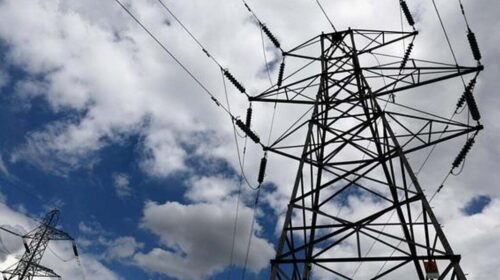Experts have agreed that privatisation of distribution companies is the only way forward for the energy sector of Pakistan. They held the view that failure to privatise the firms would enhance the problem of excess capacity and inflate circular debt.
At a dialogue titled ‘Fixing Pakistan’s Power Sector – The Way Forward’ on Wednesday, K-Electric CEO Moonis Alvi said that a good amount of money had to be paid to the power firms in form of capacity payments in absence of a smooth distribution mechanism.
“Today, the power tariff asks for 100% recovery ratio which is almost impossible,” he said. “There are a lot of costs that are inflating the circular debt which itself is a huge elephant in the room and needs to be resolved.”
He held the view that the energy sector of the nation would remain dependent on the Competitive Trading Bilateral Contract Market (CTBCM) model and Indicative Generation Capacity Expansion Plan over the next five to seven years.
He pointed out that documents of the two strategies were made public by the government which enabled the power firms and other stakeholders to comment on them, discuss the challenges and debate on the clauses for further improvement.
“It might not be implemented in its current shape but I believe that the future is deregulation and digitisation of the sector,” he said.
According to him, Pakistan was left with excess capacity in the energy sector because power was generated without considering future needs. According to him, excellent strategies were used but still they could not boost growth of the sector.
Now, Pakistan had an opportunity to shape the future and devise plans to rectify the mistakes made in the previous power policies, he said.
Terming renewables a reality, he noted that the government had an aggressive policy in place to boost power generation through eco-friendly modes.
He disclosed that five to seven years later, K-Electric would be generating 20-25% of total power from renewable energy.
Talking about his firm, he said that the company had taken a step forward and introduced an application to facilitate the public.
He shared that the power company planned to improve it further and consumers would be able to know how much time would be taken to rectify a fault.
On the occasion, LUMS Energy Institute Director Dr Fiaz Chaudhry said that the major flaw in operations of the power sector was that the country was not making informed decisions.
“In 1980s and 1990s, we had skills and capabilities to develop integrated system and resources but this strategy was missing for the last 20 years but now the country has incorporated it again,” he said.
He stressed that circular debt would not have inflated to the current unsustainable level if the regulator was working correctly.
Chaudhry elaborated that capacity payment of the country grew from Rs400 billion to Rs1 trillion in the past four years therefore Rs600 billion was paid extra for the supply of same amount of energy. “Our base load now amounts to 8,000 MW which, for the last seven years, was stagnant at 7,000 MW,” he said.
Besides, peak demand on NTDC system amounted to 25,000-26,000 MW and 3,500-4,000 MW more was reported by K-Electric.
Therefore, peak demand stood at around 29,000-30,000 MW while base load was not even 10,000 MW, he expressed concern.
Lucky Electric Power Company CEO Ruhail Mohammed elaborated that circular debt arises when total receipts and payments of power sector fail to match.
He added that the circular debt had grown to Rs2.5 trillion compared to Rs1.2 trillion when the current government assumed power in 2018.
“Therefore, Rs400 billion per year were added to the entire system,” he said.
Citing reasons behind the problem, he said that it was being witnessed on back of inefficiency of distribution companies and soaring capacity payments.
Engro Energy CEO Ahsan Zafar Syed said that power value chain had seven components including fuel, generation, distribution and demand and each of them was faced with different challenges.





